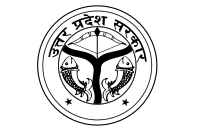Water supply and sanitation in Uttar Pradesh
This article has multiple issues. Please help improve it or discuss these issues on the talk page. (Learn how and when to remove these messages)
|
Water supply and sanitation in Uttar Pradesh, India has seen recent advancements in ensuring comprehensive access and quality. The northern state has a historical record of falling below the national average on critical metrics, leading to sanitation and water access becoming a political focal point, particularly in regions like Bundelkhand. Issues such as unequal resource distribution and water contamination present ongoing challenges.[1]
Government-led initiatives, often in partnership with private sector entities and grassroots organizations, are actively working to improve access to safe water and sanitation facilities. Despite progress, challenges remain, especially in rural areas and urban slums, highlighting the need for ongoing efforts and innovative solutions.[1]
Access
[edit]According to the National Family Health Survey 2 (NFHS2) conducted in Uttar Pradesh in 2000, only 85.6% of the population had access to an improved water source. A further 26.7% of respondents had access to a latrine.[1]
Following significant progress, subsequent surveys conducted from 2019 to 2021 indicate that access to improved water sources has increased substantially to 99.2%. Access to latrines has also shown a significant improvement, now reaching 68.7% of the population.[2]
Despite significant progress in improving access to sanitation facilities, Uttar Pradesh still grapples with open defecation, particularly in rural areas, where approximately 29% of the population continues to defecate in the open.[2] Challenges such as widespread water scarcity further complicate efforts to provide adequate sanitation and promote hygiene practices.[3]
As of 2019, the Centre for Science and Environment reported that, in some cities of Uttar Pradesh, approximately 80% of containment systems are frequently not connected to functional soak pits.[4]
See also
[edit]References
[edit]- ^ a b c "NFHS-2 FACT SHEET STATES" (PDF). National Family Health Survey (2). Ministry of Health and Family Welfare: 2. 2000-02-01.
- ^ a b National Family Health Survey 5 2019-21 Uttar Pradesh https://dhsprogram.com/pubs/pdf/FR374/FR374_UTTARPRADESH.pdf
- ^ Uttar Pradesh State Water Policy, 2020 https://upgwd.gov.in/MediaGallery/SWPUP2020DraftFeb20.pdf
- ^ Urban Wastewater scenario in India |NITI Aayog| pp19 https://www.niti.gov.in/sites/default/files/2022-09/Waste-Water-A4_20092022.pdf

